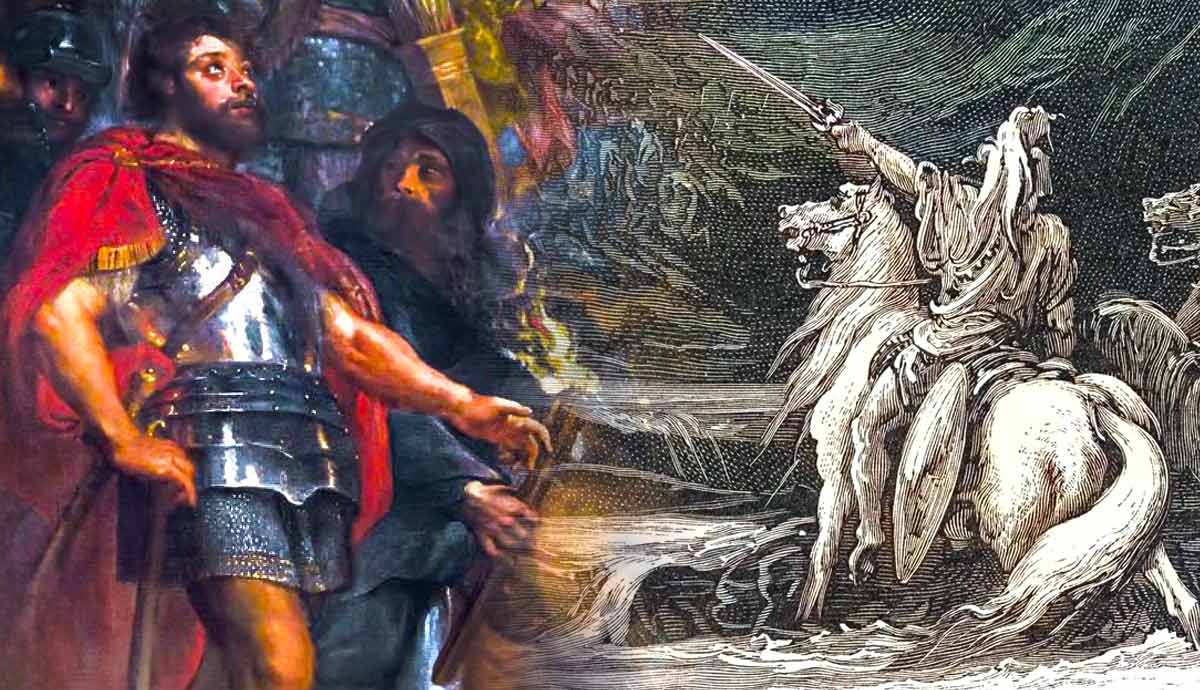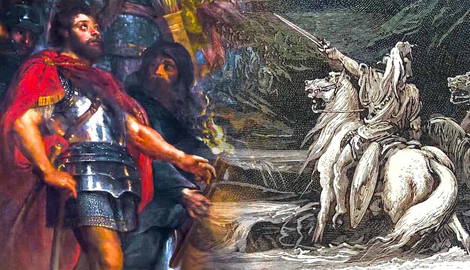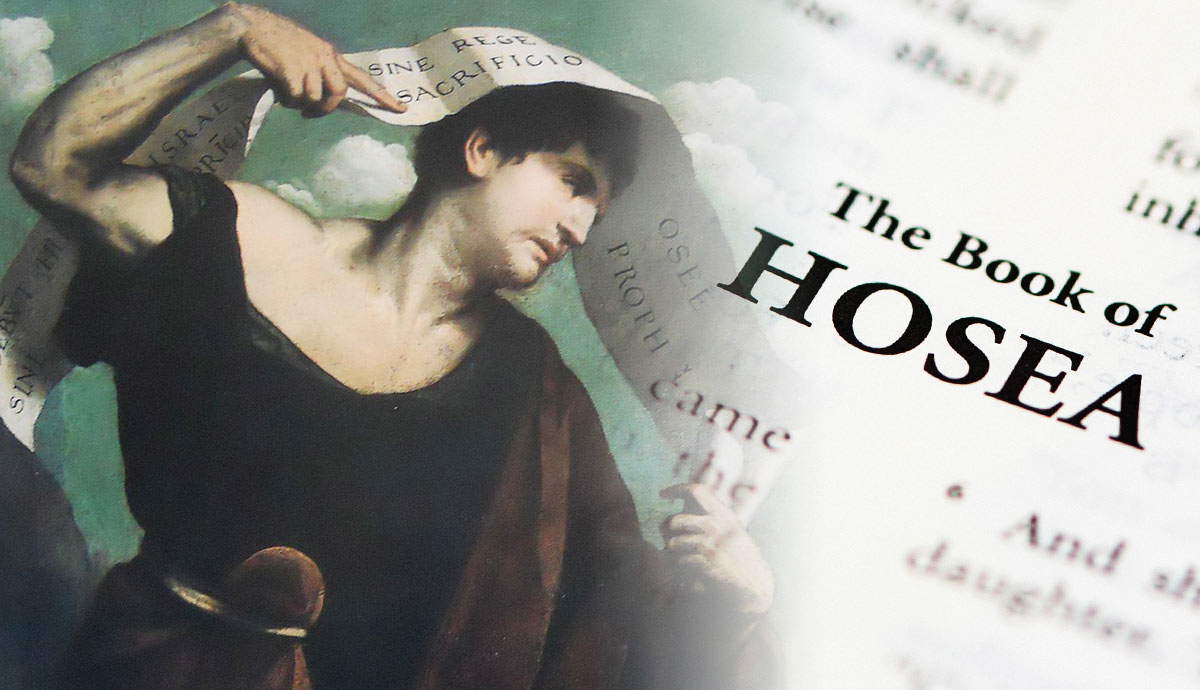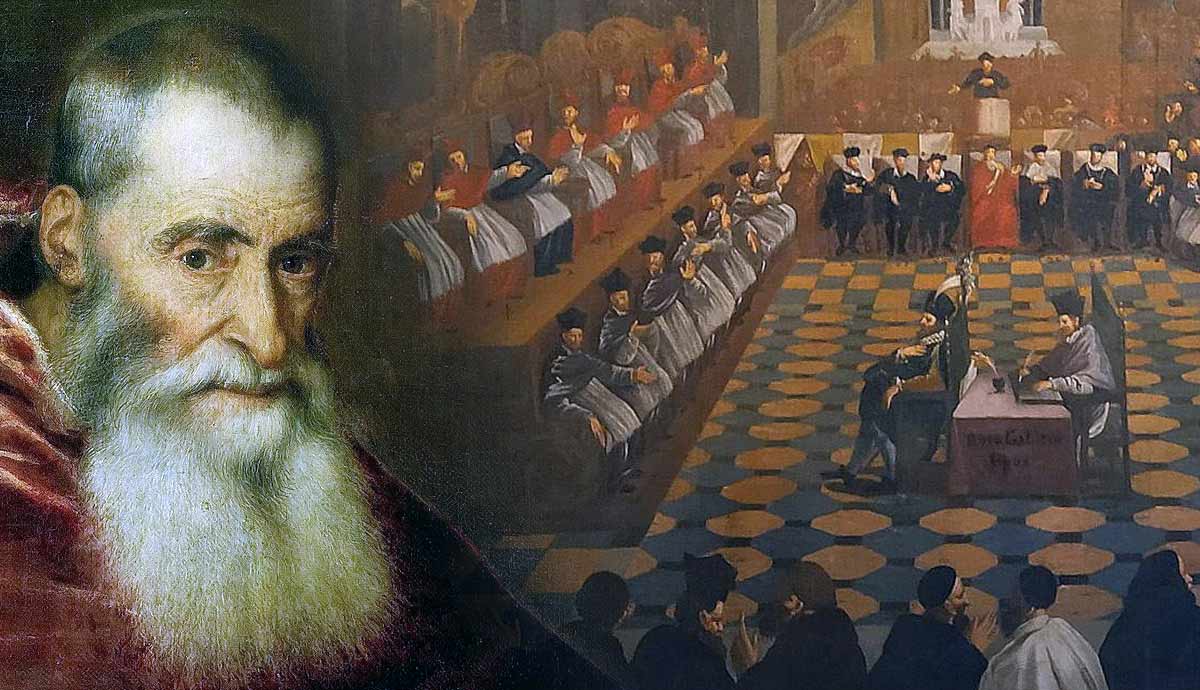
Judah (or Judas) Maccabee was an ancient Israelite independence fighter who defeated the anti-Jewish ruler King Antiochus IV in the 2nd Century BCE. Judah helped reestablish control over the Holy Temple in Jerusalem and is remembered to this day as a legendary figure of Jewish resistance and military heroism.
Born in a Time of Strife

Judah was born around 190 BCE to an elderly Jewish Priest named Mattathias ben Johanan. Judea had come under the forced rulership of the pro-Greek, Syrian-based Seleucid Dynasty after military conquest in 198 BCE. The former ruling Ptolemy Dynasty had been moderately tolerant of Jewish beliefs and culture but the Seleucids were determined to force their Greek worldview on the people.
This religious and cultural oppression took a particular turn for the worse with the accession of Antiochus IV to the throne, a man who was obsessed with getting the Jews to conform to his Grecophile beliefs. The Seleucid King Antiochus son of Seleucus IV was succeeded by King Antiochus IV Epiphanes in 175 BCE when Judah was a teenager. Antiochus worshiped the Greek gods and tried to force his people to abandon Jewish beliefs, customs, and culture.
Certain wealthy collaborators inside the country went along with Antiochus, agreeing that Hellenism, or Greek culture, was a better option for the Jews. Penalties for practicing Judaism and basic Jewish laws like circumcision and kashrut (eating kosher) became serious crimes in the time of Antiochus, and Jews were even put to death for “crimes” like publicly refusing to eat pork.
The Resistance Begins

Judah’s father Mattathias was one of the Jews who disagreed with Antiochus IV’s intensified campaign of forced Hellenization, refusing to worship the Greek gods. In 167 BCE, Mattathias killed a Seleucid soldier who tried to force him into the new pagan faith at the town of Modi’in.
Mattathias subsequently fled into the surrounding hills of Judea, beginning an intense, guerilla revolt against the Seleucids. Judah and his four brothers John, Simon, Eleazar, and Jonathan fought alongside their father, striking crippling blows at the numerically superior Seleucid forces and retreating back into the hills and tunnels after devastating raids.
When Mattathias died in 166 BCE, Judah took leadership of the Jewish guerilla army, leading daring tactical assaults and crushing enemy morale and manpower. Judah quickly proved himself a brilliant military mind, and came to be referred to with the appellative “Maccabee” from the Hebrew maqqabet, meaning “hammer” because of his crushing blows to the enemy.
Judah Maccabee’s Masterful Military Strategy

Judah Maccabee knew that his ragtag band of rebels were vastly outmatched by the professional, well-equipped forces of the Seleucids. His strategy was to skirt the army and hit them unexpectedly in sudden, short ambush attacks before he and his forces melted back into their Judean hill hideouts. This left the Seleucids terrified of spontaneous attacks and unsure where and when they might occur.
Judah himself used a sword in battle which he had taken from a slain enemy early in his fighting career. Judah led Jewish forces to especially notable victories at Beth-Horon as well as at Emmaus, where enemy soldiers under Gorgias were sent to wipe out Judah and his fighters. Avoiding Gorgias’ troops who had headed into the mountains to look for them, Judah and his men surrounded their camp and destroyed it, compelling Gorgias and his forces to retreat and regroup.
In the first several years of the war, Antiochus IV put the commander Lysias in charge of the military campaign in Judea. After the brutal humiliation of Gorgias and his troops, Lysias realized this was going to be a far more difficult war than he’d first imagined. He bulked up his standing army and this time headed it up himself to destroy Judah.
The Road to Retaking Jerusalem

As Lysias closed in on Judah, the insurgent campaign looked set to end. But instead of victory, Lysias’ forces experienced devastating defeat near the town of Beth-Zur, where Judah’s cunning and military acumen won the day. From this point on, Judah turned the tide in his favor, beginning a march to retake Jerusalem from the Seleucids and reestablish the Jewish religion. Judah Maccabee’s forces entered Jerusalem in 164 BCE and purified the Holy Temple according to Jewish rites with an eight-day festival that formed the origins of Hanukkah.
However, this was not the end of the fighting, with the Seleucids going after Jewish towns in Galilee, Gilead, and other areas. They hoped to draw out Judah and weaken his ability to hold Jerusalem and the Holy Temple. Judah’s brother Simeon liberated Galilee with a force of 3,000 fighters and brought many of the civilians to safety in Maccabee-controlled territory.
Judah and his brother Jonathan, meanwhile, headed to the Transjordan to fight against Arabic horsemen who were laying siege to the Jews in that area. Judah and Jonathan defeated these Arabian fighters, who withdrew. After this, Judah and Jonathan fought their way through Seleucid-occupied Hebron, destroying most of it and going on to clear Gilead and gather large amounts of treasure to bring back to Judea.
The Seleucids Back Down

Judah suffered a defeat at the battle of Bet Zekharyah and subsequently pulled back to Jerusalem where his forces at Beth-Zur also pulled back and circled back to the capital. Lysias and his troops pursued, laying siege to Judah who was gathered on Mount Zion and running out of supplies and food for his forces.
At this point, however, political changes back in the Seleucid empire transformed the whole conflict. The Seleucid empire held its capital in Antioch, in northern Syria, and as Judah and Lysias continued their fight around Mount Zion news came that the military commander Philip was on the cusp of taking power back in Antioch. The reign of Antiochus IV was coming to an end, and the political turmoil was not an opportune situation for continuing the brutal campaign that was ongoing.
Lysias negotiated for peace, granting religious and cultural rights back to the Jews under Judah, who sought to reestablish a Jewish nation. However, they were to face tragic struggles as a new conflict began: civil war.
Internal Conflict Between Hellenist Jews and Nationalist Jews

Judah’s Jewish nationalist forces now had a new enemy: the internal Hellenist collaborators and political forces who still wanted a Greek-style kingdom. The pro-Hellenists eventually turned back to the Seleucids for support, led by a man named Demetrius who asked the Seleucids to help against the pro-Jewish forces led by Judah.
The Seleucids sent out more troops under General Bacchides, who marched into Judea and began executing those loyal to Judah who responded by destroying the forces of Bacchides and letting the general flee. Judah’s victory wasn’t well received by the Seleucids nor the Hellenists, who raised a new military force under General Nicanor and marched on Judea once again.
This time around, Judah acted again to destroy Nicanor, defeating his efforts. Bacchides was sent back yet again with a massive Syrian force under his command, marching on Judah’s forces, many of whom fled the scene of battle. Judah refused to back down, at the cost of his own life. Judah Maccabee died in battle in 160 BCE at the Battle of Elasa fighting the troops of Bacchides a second time around. He was buried at Modi’in where his father Mattathias had first stood up to the hostile foreign powers ruling the nation.
Judah Maccabee: A Jewish Hero

Judah Maccabee’s story is contained in the histories of Josephus as well as the two Books of the Maccabees in the Torah and the Catholic Vulgate. Judah has been a major inspiration to artists, playwrights, musicians, and poets throughout the centuries since his death. He is widely regarded as one of the biggest heroes of the Old Testament and is an icon and legendary hero of Jewish history.
Art featuring Judah has influenced culture since his death, including the famous illustration of Judah winning over his foes by French painter Jean Fouquet and Peter Paul Rubens’ famous painting of Judah. Other notable artworks include Paul Gustave Doré’s painting of Judah hunting down the remaining troops of his Seleucid enemies.
Judah Maccabee is still very much relevant and a source of inspiration and pride to Jewish people to this day. Here, for example, Judah is invoked by an Israeli commander to Israel Defense Forces (IDF) troops before they enter Gaza to fight Hamas on October 30, 2023. As he says, “we are not alone. Standing here with us, I can feel it, are the soldiers of King David. Here with us today are the Maccabees. We’re here today with Mordechai Anielewicz, the warriors of the Warsaw Ghetto…All the warriors of Israel from the time we became a nation to today.”










